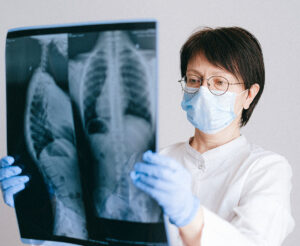It’s long been known how dangerous occupational exposure to silica and beryllium is.
Now, you can add to the list of dangers: the inflammatory diseases known as sarcoidosis.
What is Sarcoidosis?
Sarcoidosis is a disease in which inflammatory cells collect and grow throughout parts of the body, such as the lungs and lymph nodes. Sarcoidosis can potentially damage organs.
It’s believed that the disease results from the body’s immune system responding to an unknown substance.
Although some treatments are available, no cure for it exists. In some cases, however, sarcoidosis can clear up on its own.
In a study conducted in the Netherlands, researchers assessed the potential exposures to silica, beryllium, aluminum, and zirconium among 256 sarcoidosis patients. There were 73 control patients with obstructive sleep apnea (OSA), because there is no correlation between environmental triggers and the development of OSA.
Their findings?
The group of sarcoidosis patients had a higher percentage of workplace exposure to silica or the other metals. 32.4% for sarcoidosis patients, with only 24.7% for the control group.
OSHA Silica Standards
Over the past few years, OSHA issued two separate silica standards – one for general industry and maritime (29 CFR 1910.1053), and the other for construction (29 CFR 1926.1153).
In Table 1 of the silica standard for construction work, OSHA outlined 18 tasks that may expose employees to respirable crystalline silica. These tasks range from the use of stationary and hand-held saws, to the operation of heavy equipment and utility vehicles for abrading and excavating silica-containing materials.
Related: How to Protect Enclosed-Cab Workers From Silica Dust
For each job, a hierarchy of engineering controls, work practices, and respiratory protection methods are specified to limit employee exposure to an airborne concentration of respirable crystalline silica of less than 25 μg/m3, calculated as an 8-hour TWA.
Engineering controls include things like wet methods, local exhaust ventilation, and isolation (such as in a ventilated control booth or enclosed cab). Wetting silica dust before sweeping, for example, is an excellent way to reduce your team’s exposure.
OSHA Beryllium Standards
Similar to silica, there are three separate health standards for general industry, construction, and shipyards.
However, OSHA updated a final rule for workers occupationally exposed to beryllium and beryllium compounds in general industry. These new provisions went into effect on Sept. 14, 2020.
Here are some key highlights:
- Permissible exposure limit (PEL) for beryllium of 2 micrograms of beryllium per cubic meter of air (μg/m3) as an 8-hour time-weighted average. This change represents a ten-fold decrease from the previous PEL.
- A short-term exposure limit for beryllium of 0 μg/m3as determined over a sampling period of 15 minutes.
- Mandates for employers to
-
- use engineering and work practice controls (such as ventilation or enclosure) to limit worker exposure to beryllium
- provide respirators when controls cannot adequately limit exposure
- limit worker access to high-exposure areas
- develop a written exposure control plan; and
- train workers on beryllium hazards.
Keep in mind that this is only a brief overview of the requirements.
Make sure you understand the details of these changes and how they impact your employees and workplace. Learn more here.
Medical Surveillance Testing
In most workplaces, both silica and beryllium exposure require consistent medical surveillance testing.
If you require your team to wear respirators for 30 or more days per year, they’ll need physicals, fit testing, and medical clearance. That’s when we’re here to help.
Let’s face it, the testing is required, but it’s not always easy to coordinate trips to the clinic. And, it’s risky, especially during a pandemic. We make it easier by bringing the entire clinic to your worksite with mobile medical surveillance testing.
We conduct on-site respirator fit tests (including N95 masks), as well as pulmonary function tests and heavy metal lab work, right on your job site. We also keep accurate, easy-to-access medical records for your convenience. You’ll keep your employees at work, and stay ahead of OSHA inspections.
With Worksite Medical, a mobile medical testing unit — we can bring all the resources of a lab to you. Our certified lab technicians can perform both qualitative and quantitative respirator tests to ensure a perfect fit.
Protect your team and your workplace now with Worksite Medical. Not sure what you need? Try our medical testing wizard here.
Give us a call at 1-844-622-8633, or complete the form below to schedule an on-site visit or to get your free quote!




